No products in the cart.
Return To Shop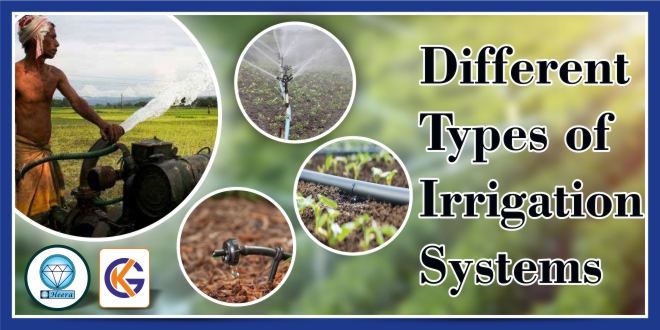
Different Types of Irrigation Systems
Well and Tube Well Irrigation System:
A Well and Tubewell consider as part of the Irrigation System. A well is a hole dug in the ground to get the subsoil water. Normal well is about 3-5 meters deep but deeper wells up-to 15 meters are also dug. This system of irrigation has been used in India since ancient times. Various methods are used to lift the groundwater from the well for irrigation, drinking, bathing and for other purposes. Well, irrigation is more popular in those regions where groundwater is in ample and where there are few canals. These areas include a large part of the Great Northern Plain, the deltaic regions of the Mahanadi, the Godavari, the Krishna, and the Cauvery, parts of the Narmada and the Tapi valleys and the weathered layers of the Deccan Trap and crystalline rocks and the sedimentary zones of the Peninsula. However, the greater part of Peninsular India is not appropriate for good irrigation due to stony structure, rough surface and lack of underground water. Large dry tracts of Rajasthan, the adjacent parts of Punjab, Haryana, and Gujarat and some parts of Uttar Pradesh have salty groundwater that is not suitable for irrigation and human use and hence inappropriate for good irrigation.
Tube well: A tube well is a deeper well (generally over 15 meters deep) from which water is lifted with the help of a pumping set operated by an electric motor, a diesel engine or solar power. A tube well cannot be constructed in all places and requires some geographical conditions favoring its installation. The main factors for Tube well construction are:
- There should be enough quantity of groundwater because a tube well can generally irrigate 2 hectares per day against 0.2 hectares per day irrigated by an ordinary well.
- The water level should be nearly 15 meters. If the water table is more than 50 meters deep the cost of pumping out water from the tube well becomes uneconomic.
- There should be a normal supply of cheap electricity or diesel so that water from the tube well can be taken out at the hour of need.
- The soil in the immediate neighborhood of the tube-well should be productive so that there is a demand for irrigation and the cost involved in the construction and operation of the tube well can be recovered by the increased farm production.
Advantages of Well and Tube Well Irrigation: Well is the simplest and cost-effective source of irrigation and the poor Indian farmer can easily afford it. Well is an independent source of irrigation and can be used as and when the necessity arises. Several chemicals such as nitrate, chloride, sulfate, etc. are generally found mixed in well water. They make soil fertility when they reach the agricultural field along with well water. It is more reliable during periods of famine when surface water dries up.
Disadvantages of well and Tube Well Irrigation: With these methods, the only limited area can be irrigated. Normally, a well can irrigate 1 to 8 hectares of land. The well may dry up and maybe rendered ineffective for irrigation if excessive water is taken out. In the drought situation, the groundwater level falls and enough water is not available in the well when it is needed the most.
Tube wells can draw a lot of groundwater from its neighboring areas and make the ground dry and not suitable for agriculture. Well, and tube well irrigation is not possible in areas of salty groundwater.
Canal Irrigation:
Canals are the most important source of irrigation from the period of the 1960s, but in the 1970s, they yielded first place to wells and tube wells and now constitute the second most important source of irrigation in India. Canals are the most effective techniques of irrigation in areas of low-level relief, deep fertile soils, a perennial source of water and extensive command area. Therefore, the main concentration of canal irrigation is in the northern plain of India, especially the areas comprising Uttar Pradesh Haryana and Punjab.
The digging of canals in stony and uneven areas is difficult and unprofitable. Thus the canals are practically absent from the Peninsular plateau area. However, the coastal and the delta regions in South India do have some canals for irrigation

Canals in India are of two types:
Inundation canals, which are taken out from the rivers without any regulating system like weirs at their head. Such canals supply irrigation mainly in the rainy season when the river is in flood and there is excess water. When the rainy season is over, the flood in the river subsides, the level of water falls below the level of the canal head and the canal dries up. Some canals taken off from the Satluj in Punjab were of this type. Since irrigation from this type of canals is unsure, they have been converted into perennial canals.
Perennial Canals are those which are taken off from perennial rivers by constructing a barrage across the river. Most of the canals in India today are perennial.
Advantages of Canal Irrigation: Most of the canals provide perennial irrigation and supply water as and when required. This saves the crops from drought conditions and helps in increasing farm production. Canals carry a lot of residues brought down by the rivers. This sediment is deposited in the agricultural fields which makes the soil more fertile. Some of the canals are parts of multipurpose projects and, therefore, provide an inexpensive source of irrigation. Although the initial cost involved in canal irrigation is more, it is quite cheap in the long run.
Drawbacks of Canal Irrigation: The canal water soaks into the ground and results in water-logging along the canal route. Excessive flow of water in the fields raises the groundwater level. Capillary action brings alkaline salts to the surface and makes large areas unfit for agriculture. Huge areas in Panjab, Haryana and Uttar Pradesh suffer from the problem caused by canal irrigation. The muddy areas near the canals act as reproduction grounds of mosquitoes which result in widespread malaria. Many canals overflow during the rainy season and flood the surrounding areas. Canal irrigation is suitable in plain areas only.
Tank Irrigation:

A tank act as an irrigation storage system that is developed by constructing a small bund of earth or stones built across a stream. The water impounded by the bund is used for irrigation and for other purposes. Some tanks are built partly as dugouts and partly by enclosing bunds. Tanks are of varying size but most of the tanks are of small size and are built by individual farmers or groups of farmers. Tank irrigation is more suitable in the peninsular plateau area such as Andhra Pradesh (Including Telangana) and Tamil Nadu.
Andhra Pradesh is the largest state of tank irrigation which has about 29 percent of tank irrigated area of India. About 16 percent of the total irrigated area of the state is irrigated by tanks. The drainage areas of the Godavari and its tributaries have a large number of tanks. Nellore and Warangal are the main districts of tank irrigation.
According to reports, Tamil Nadu has the second largest area which is over 23 percent of tank irrigated area of India and about one-fifth of the total irrigated area of the state. Tanks comprise an important source of irrigation in the Karnataka Plateau, eastern Madhya Pradesh, eastern Maharashtra, interior Orissa, and Kerala. Outside the Peninsular plateau, West Bengal, Bihar, Bundelkhand area of Uttar Pradesh, Rajasthan and Gujarat have tank irrigation.
Advantages of Tank Irrigation: Most of the tanks are natural and not expensive for their construction. Even an individual farmer can have his own tank. Tanks are normally constructed on the rocky bed and have a long life. In many tanks, fishing is also done. This supplements both the food resources and income of the farmer.
Drawbacks of Tank Irrigation: The major problem with tanks water storage is that tanks dry up during the dry season and fail to provide irrigation when it is needed the most. Silting of the tank bed is a serious problem and it requires de-silting of the tank at regular intervals. Much water is evaporated from the large expanse of shallow water and is therefore not available for irrigation. Tanks cover large areas of cultivable land. In many areas, other sources of irrigation have been adopted and the dry beds of tanks have been reclaimed for agriculture. Furthermore, lifting of water from tanks and carrying it to the fields is a tiring and expensive effort that discourages the use of tanks as a source of irrigation.
Micro-Irrigation or Localized irrigation:
Drip irrigation:
In the area of the irrigation process, drip irrigation is a modern technique. It is also called trickle irrigation, which was originally developed in Israel in the early 1960s and became popular in areas of water scarcity. The drip irrigation is the most competent and it can be practiced in an array of crops, especially in vegetables, orchard crops, flowers, and plantation crops.
Drip irrigation was used to the ancient custom in certain parts of India of irrigating a Tulsi plant kept in the courtyard. During the summer months, the plant was irrigated by a hanging pitcher containing water and a minute hole at its bottom to allow the trickling of water on to the plant. The tribal farmers of Arunachal Pradesh practiced a primitive form of a drip irrigation system using a slender bamboo as the conduit for water flow. The use of drippers in the sub-surface irrigation network first experimented in Germany in 1869. The noticeable growth of the petrochemical industry during and after the 1950s aided manufacturing of plastic pipes at a cost much cheaper than the cost of metallic or cement concrete pipes. Plastic pipes are convenient for water conveyance under pressure and the plastic material is easily formed into the desired configuration. These features of plastic made the field-scale use of drip irrigation practicable. The drip system was developed for field crops in Israel in the early 1960s and in Australia and North America in the late 1960s. The area under the drip irrigation system in the USA is about 1 M ha, followed by India, Spain, and Israel. In India, there has been tremendous growth in the area under drip irrigation during the last 15 years.
In India with the tree crops occupying the maximum percentage of the total area under drip irrigation, followed by vine crops, vegetables, field crops, flowers, and other crops.
In drip irrigation, water is applied near the plant root through emitters or drippers, on or below the soil surface. The soil moisture is kept at an optimum level with frequent irrigations. In this method, irrigation water is conveyed on the surface in 12 to 16 mm diameter tubing’s fed from large feeder pipes. The water is allowed to drip or trickle slowly through the nozzle or orifices at practically zero pressure. In this way, the soil in the root-zone of crops is constantly kept wet. Drip irrigation results in a very high water application efficiency of about 90-95 percent.
The area under the drip irrigation system in the USA is about 1 M ha, followed by India and other countries.
The major component of drip irrigation:
- Pump station
- Bypass assembly
- Control valves.
- Filtration system
- Fertilizer tank/Ventury
- Pressure gauge
- mains/Sub mains
- Laterals
- Emitting devices
- Microtubes.
Pump station takes water from the source and provides the right pressure for delivery into the pipe system.
Control valves control the discharge and pressure in the entire system.
Filtration system cleans the water. Common types of filters include screen filters and graded sand filters which remove fine material suspended in the water.
Fertilizer tank/venturi slowly add a measured dose of fertilizer into the water during irrigation. This is one of the major advantages of drip irrigation over other methods.
Mainlines, sub mains, and laterals supply water from the control head into the fields. They are usually made from PVC or polyethylene hose and should be buried below ground because they easily degrade when exposed to direct solar radiation. Lateral pipes are usually 12-32 mm in diameter.
Emitters or drippers are devices used to control the discharge of water from the lateral to the plants. They are typically spaced more than 1 meter apart with one or more emitters used for a single plant such as a tree. For row crops more closely spaced emitters may be used to wet a strip of soil. Many different emitter designs have been produced in recent years. The basis of design is to produce an emitter that will provide a specified constant discharge which does not vary much with pressure changes, and does not block easily.
Many crops are irrigated by the drip method in India with the tree crops occupying the maximum percentage of the total area under drip irrigation, followed by vine crops, vegetables, field crops, flowers, and other crops.
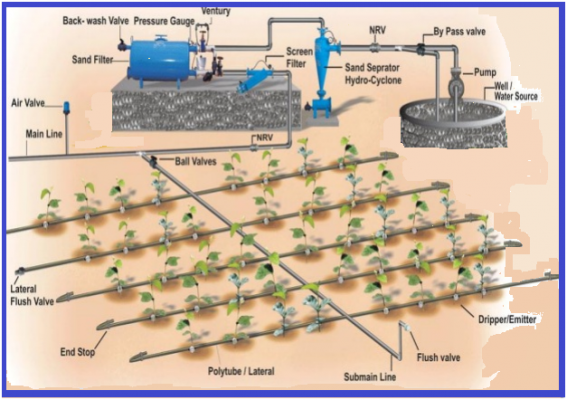
Crop suitable for drip irrigation:
The National Committee on Plasticulture Applications in Horticulture (NCPAH), Ministry of Agriculture, Government of India, has approximate a total of 27 million hectares area in the country that has the potential of drip irrigation application. Through this method, crops can be grown productively over the saline lands also. This technique has been beneficial in reclaiming and developing desert and arid areas. The main disadvantage of this method is that it is expensive. But with the growing realization of the value of water, this method has been introduced in other countries of the world particularly in desert areas. The method is still in the preliminary stages of development in the nation.
Drip irrigation layout and its parts:
The advantages of drip irrigation are under
- Possibility of using soluble fertilizers and chemicals.
- Fertilizer and nutrient loss is minimized due to localized application and reduced leaching.
- Water application efficiency is high.
- Field leveling is not necessary. Fields with irregular shapes are easily accommodated.
- Recycled non-potable water can be safely used.
- Soil type plays a less important role in the frequency of irrigation.
- Soil erosion is lessened.
- Weed growth is lessened.
- Water distribution is highly uniform, controlled by the output of each nozzle.
- Labor cost is less than other irrigation methods.
- Variation in supply can be regulated by regulating the valves and drippers.
- Plants remain dry, reducing the risk of disease.
- Usually operated at a lower pressure than other types of pressurized irrigation, reducing energy costs.
The shortcomings of drip irrigation are:
- The initial costs can be more in this technique.
- The sun rays can affect the tubes used for drip irrigation, shortening their usable life.
- If the water is not properly filtered and the equipment not suitably maintained, it can result in blockage.
- For subsurface drip, the irrigator cannot see the water that is applied. This may lead to the farmer either applying too much water (low efficiency) or an insufficient amount of water, this is particularly common for those with less experience with drip irrigation.
- Drip irrigation might be inadequate if herbicides or top-dressed fertilizers need sprinkler irrigation for activation.
- Drip tape causes extra clean-up costs after harvest. Users need to plan for drip tape winding, disposal, recycling or reuse.
- Waste of water, time and harvest, if not installed properly. These systems require careful study of all the relevant factors like land topography, soil, water, crop, and agro-climatic conditions, and suitability of drip irrigation system and its components.
- In lighter soils subsurface, drip may be unable to wet the soil surface for germination. Requires careful consideration of the installation depth.
One of the main purposes of drip irrigation is to decrease water consumption by reducing the leaching factor. However, when the available water is of high salinity or alkalinity, the field soil becomes gradually unsuitable for cultivation due to high salinity or poor infiltration of the soil. Consequently, drip irrigation converts fields into fallow lands when natural leaching by rainwater is not adequate in semi-arid and arid regions.
Most drip systems are designed for high efficiency and have little or no leakage. Without sufficient leaching, salts applied with the irrigation water may build up in the root zone. On the other hand, drip irrigation avoids the high capillary potential of traditional surface-applied irrigation, which can draw salt deposits up from deposits below. Drip irrigation systems cannot be used for damage control by night frosts.
Sprinkler Irrigation:
In the sprinkler technique of irrigation, water is sprinkled into the air and allowed to fall on the ground surface just like rainfall. The spray is done by the flow of water under pressure through small orifices or nozzles. The pressure is generally obtained by pumping. Through proper selection of nozzle sizes, operating pressure and sprinkler spacing the amount of irrigation water required to refill the crop root zone can be applied almost uniformly at the rate to suit the infiltration rate of the soil. In agriculture, almost all crops are suitable for sprinkler irrigation systems except crops such as paddy and jute. The dry crops, vegetables, flowering crops, orchards, plantation crops like tea, coffee are all suitable and can be irrigated through sprinklers techniques of irrigation.

The sprinkler irrigation is categorized according to the functions which are mentioned as under:
1. The main irrigation system
2. The supplementary irrigation system
3. The protective irrigation system The sprinkler irrigation system is effective for irrigation on uneven lands and on shallow soils. It is also suitable to coarse sandy terrain where the percolation loss is more and whereas a consequence, the frequency of irrigation required is more. The sprinkler irrigation system is appropriate in rising and falling land where land shaping is expensive or technically not practicable. The elimination of fertile soil cover by land shaping is not advisable. A sprinkler irrigation system can also be espoused in hilly regions where plantation crops are grown.
Historical facts signified that though sprinkler irrigation system is known since 1946, yet the farmers started adopting it on a huge scale only since the 1980s. It began in the hilly areas of the Western Ghats in states of Kerala, Tamil Nadu, and Karnataka and in the Northeastern states mainly for plantation crops like coffee, tea, cardamom, rubber. Gradually it spreads to the water scarcity and light soil states of Rajasthan and Haryana in addition to the black soil area of Madhya Pradesh.
Advantages of sprinkler irrigation:
- Elimination of the channels for conveyance, therefore no conveyance loss.
- It is suitable for all types of soil apart from heavy clay.
- It is an appropriate technique for irrigating crops where the plant population per unit area is very high. It is most suitable for oilseeds and other cereal and vegetable crops.
- It saves water.
- With this technique of irrigation, there is control of water application convenient for giving light and frequent irrigation and higher water application efficiency.
- Sprinkle irrigation increases in yield.
- There is a mobility of the system.
- It may also be used for the undulating area.
- It saves land as no bunds are required.
- This technique influences greater conducive micro-climate.
- Areas located at a higher elevation than the source can be irrigated.
- In this technique, there is a possibility of using soluble fertilizers and chemicals.
- In this method of irrigation, there is less problem of clogging of sprinkler nozzles due to sediment-laden water.
- The overall cost of labor is generally reduced in this method of irrigation.
- Erosion of soil cover which is common in surface irrigation can be reduced.
Disadvantages of a sprinkler system:
- In this technique, the initial cost of implementation is high.
- High and constant energy required for operation.
- Under high wind condition and high-temperature distribution and application efficiency is poor.
- Highly saline water causes leaf burning when the temperature is higher than 95 F.
- When lands have been already leveled and developed for surface or other irrigation methods sprinkler irrigation is not so economical.
- There is a loss of water due to evaporation from the area during irrigation.
Other Irrigation methods:
Surge Irrigation: Surge Irrigation is an alternative of furrow irrigation where the water supply is pulsed on and off in planned time periods (e.g. on for 1 hour off for 1½ hour). The wetting and drying cycles reduce infiltration rates resulting in faster advance rates and higher uniformities than constant flow.
Ditch Irrigation: Ditch Irrigation is a type of traditional method, where ditches are dug out and seedlings are planted in rows. The plantings are watered by placing canals or furrows in between the rows of plants. Siphon tubes are used to move the water from the main ditch to the canals.
Sub-irrigation or seepage irrigation: It is a system of irrigation where water is allowed to the plant root zone from below the soil surface and absorbed upwards. The excess may be collected for reuse. Sub-irrigation is used in growing field crops such as tomatoes, peppers, and sugar cane in areas with high water tables. The major benefits of this system are water and nutrient conservation, and labor-saving. The outfitting cost is comparatively high. The main problems include the possibility of the increased presence of disease in recycling water.
To summarize, Irrigation is a technique of supplying water to the dry land as supplementation of rainwater. It is mainly aimed at farming. There are various types of systems of irrigation practices in different parts of India. Irrigation in India is carried on through wells, tanks, canals, perennial canal, and multi-purpose river valley projects. The irrigation engineer should be acquainted with the type of soil moisture, quality of irrigation water, frequency of irrigation for the proper implementation of irrigation systems.
-
 Heera Pre Punch Pepsi (5 Kg Bag)₹900.00
Heera Pre Punch Pepsi (5 Kg Bag)₹900.00 -
 Heera Inline Drip Lateral₹1,250.00 – ₹1,850.00
Heera Inline Drip Lateral₹1,250.00 – ₹1,850.00 -
Product on sale
 Flat Inline Drip Lateral₹1,800.00 – ₹3,350.00
Flat Inline Drip Lateral₹1,800.00 – ₹3,350.00 -
 Heera Online Drip Lateral₹1,550.00 – ₹2,400.00
Heera Online Drip Lateral₹1,550.00 – ₹2,400.00 -
 Micro / Orange Sprinkler₹25.00
Micro / Orange Sprinkler₹25.00 -
 HEERA VARSHA SPRINKLER SET₹200.00
HEERA VARSHA SPRINKLER SET₹200.00 -
Product on sale
 Rain Pipe₹900.00
Rain Pipe₹900.00 -
 Butterfly Micro Sprinkler₹40.00
Butterfly Micro Sprinkler₹40.00 -
 Heera Nano / Tiny₹750.00
Heera Nano / Tiny₹750.00




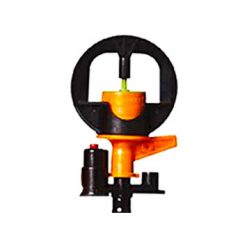


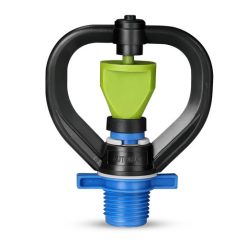








Leave a reply